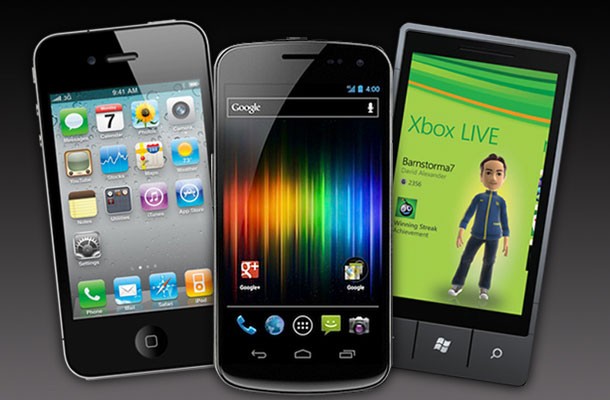Please support Game Informer. Print magazine subscriptions are less than $2 per issue
Mobile Gaming State Of The Union

The mobile gaming landscape has changed drastically over the past few years. As Apple and Google strive to get smartphones into the hands of as many consumers as possible, developers have taken advantage of the digital platforms to usher in a new way to play games. If you’re a gamer looking to make a switch to a new phone, here is what you need to know about the competing platforms.
iOS
State: Strong
The popularity of Apple’s iPhone knows no bounds. The release of the iPhone 4S delivered the anticipated surge of new owners, and in early March the company proudly announced that over 25 billion apps have been downloaded since the App Store went live in 2008. The App Store also contains a higher percentage of paid apps compared to Google Play (previously known as the Android Market), which makes it easier for developers to turn a profit than with ad-supported apps. Because of these reasons, iOS continues to be the primary platform developers debut their games on.
Strengths:
Apple’s iOS platform provides a standardized experience. Everyone who buys an iPhone knows exactly what they’re getting, and developers only have to focus on one OS version and few hardware configurations.
Weaknesses:
Apple places more restrictions on developers than Google, and the App Store is the only source for distribution. The App Store has also been prone to manipulation, with some developers using underhanded tactics to get their apps to the top of the rankings.
Android
State: Growing
While Apple provides hardware and software as one cohesive unit, Google focuses on creating a mobile OS that can run on a variety of third-party handsets. So far Google’s plan has been working. According to Nielsen’s Q4 2011 smartphone study, 46 percent of smartphone owners use a handset running Android, compared to 30 percent running iOS. Despite this market share advantage, Android still lags behind iOS in getting timely game releases. Google has made great strides in the past year securing titles from popular developers like PopCap, EA, and Halfbrick, but the games were available on iOS for months (if not years) in advance, and Android still has very few exclusives.
Strengths:
Android offers more free and ad-supported games than iOS. The Amazon App Store offers a free app of the day, while Google Play attempts to stay competitive with regular sales.
Weaknesses:
The strategy that has gotten Android phones into the hands of so many consumers is also its greatest drawback for developers. Not only do game makers have to worry about supporting and testing a variety of different hardware, but because Google doesn’t require handset manufacturers to adopt the latest OS release, Android users are fragmented between a number of different OS versions. The Android market’s preference for ad-based apps makes it harder for developers to turn a profit, leading many to roll out their games on iOS first. Users also have to contend with multiple store fronts to see the full game catalog.
Window Phone 7
State: Weak
It’s easy to forget that there’s a third platform in the mobile race: Windows Phone 7. For gamers, Microsoft has made Xbox Live integration its primary selling point, which allows 360 owners to link their profile and Gamerscore to their phone. WP7 phones enjoy a handful of exclusive XBLA crossover titles, such as Ilomilo, Fable: Coin Golf, and the Avatar-infused Full House Poker, as well universal games like Plants vs. Zombies, Angry Birds, and The Sims. However, WP7’s app library is less than a quarter the size of Android’s library, and falls even further behind iOS. Microsoft still hasn’t taken full advantage of WP7’s Xbox Live integration (real-time multiplayer still isn’t available), but we can’t really blame the company. Microsoft is competing with two behemoths; Apple has an overwhelming grip on consumer mindshare, while Android has carved out its place in the market as an open platform supporting a variety of cheaper handsets. What Microsoft’s role will be in the coming years remains to be seen.
Strengths:
Xbox Live integration should appeal to Achievement nuts, and Microsoft theoretically has the weight to attract more XBLA exclusives to the platform.
Weaknesses:
No one is buying them. According to the previously mentioned Nielsen study, Windows Phone 7 is running on just 1.3 percent of all smartphones in the U.S. That consumer disinterest undoubtedly makes WP7 a distant third for mobile game developers seeking viable platforms.
This article originally appeared in issue 230 of Game Informer.










